If you have never experienced the thrill of riding across the water, wind, and spray in your face, leaning back and going at a scary-fast pace, you have not experienced the awesome thrill of this sport.
Many have enjoyed it over the years and are wondering, with the advent of other water sports such as kitesurfing, if Windsurfing is still popular.
As a windsurfer for twenty years, back in its heyday, I was curious about this question as well.
- A Brief History of Windsurfing
- The Decline of Windsurfing
- Windsurfing Gets A Second Wind
- The Future of Windsurfing
- Where Is Windsurfing Most Popular?
- Conclusion
- You Might Also Like…
A Brief History of Windsurfing
With Newman Darby‘s invention in 1948 of a handheld sail and rig that were mounted on a universal joint to control a small catamaran, the sailboard had its humble beginnings.
Darby did not patent the design until the early 1980s. He is recognized as the inventor of the first sailboard. However, by 1970, the patent for the first sailboard went to the engineer and sailor Jim Drake and the surfer and skier Hoyle Schweitzer.
They offered this description in their patent:
“…wind-propelled apparatus in which a mast is universally mounted on a craft and supports a boom and sail. Specifically, a pair of curved booms are accurately connected athwart the mast and secure the sail there between the position of the mast and sail being controllable by the user but being substantially free from pivotal restraint in the absence of such control.”
The Windsurfer design was being mass-produced in the early 70s, gaining tremendous popularity in Europe.
It was there that the first championships were held, and numerous households owned at least one board. In 1984, it became an Olympic Sport for men and, for women, in 1992.
What About Windsurfing in the United States?
In the United States, windsurfing was becoming very popular in the 1980s, with magazines such as Windsurf Magazine, Clay Feeter’s Wind Tracks, and later American Windsurfer.
The 1980s saw abundant races in San Francisco and other windy places, while local hot spots became the place for ordinary people to spend their weekends on the water.
Places like Bodega Bay, Larkspur Landing, Berkeley Marina, and San Francisco Bay were loaded with colorful sails being rigged, while a rainbow of colors flashed across the water.
At Larkspur Landing, adventurous sailors whizzed past San Quentin prison in the hope of not having an equipment breakdown and being “escorted” off the property by uniformed prison guards.
No Technology in the Early Days
Without technology in the early days, windsurfers would sit on the beach, waiting for the “wind to pick up.” Some even had hand-held wind meters to announce the arrival of wind.
When not on the water, windsurfing was a social sport that centered around talking about equipment, stories of sailing adventures, travel to hot spots, and more. Help was always available if a sail needed tightening or a screw was lost.
Along the coast in California, wave sailors would gather near Santa Cruz and Waddell Creek, another popular spot.
Here’s some footage from the early days of windsurfing:
Equipment Was King
People had at least two boards, one for calm winds and a smaller one for when the wind picked up. You had abundant sails in size ranges, that could be anywhere from 3.5 square meters to, eventually, 8 square meters for light wind.
As a wind junkie, I eventually had a custom board designed in Cape Hatteras, N.C. I designed the graphics and gave the design to the busy board shaper.
The art was colorful and the shape very unique and tailored to my size and weight; today the board flies across Tampa Bay, without me on it. It was bought by a seasoned windsurfer from Cuba, who appreciated its very splashy graphics.
A friend of mine, Dave, who lived in the Columbia Gorge near Hood River, had about 4 or 5 boards, which hung from the ceiling of his bedroom. Since he worked for a local shop, this might have been part of the reason.
By the late 1990s, hand-held wind meters were replaced by technology – iwindsurf was born, and the beach crowds were soon home watching the wind. And by 2000, board shapes began to change to become easier for learning, while they planed more quickly.
Who Was the First Woman Windsurfer?
The honor of being the first to try this sport goes to Darby Newman’s wife, Naomi Darby. She had helped her husband in his design of the sailboard; they spoke about it in their book, The Birth of Windsurfing.
The Decline of Windsurfing
By the late 1990s, there were fewer people teaching beginning windsurfing, and the advent of the shortboard made the sport more difficult.
In a 2001 article entitled Where Have All the Windsurfers Gone?, it appeared that by the year 2000, windsurfing had taken a fall of 71 percent between 1995 and 2000.
According to a NYTimes.com article written in 2011, between the years 1999 and 2004, among some 80 American recreational pursuits, windsurfing ranked dead last.
Reasons for the Decline of Windsurfing
Some reasons for the decline might have included:
- “Wind snobs,” who only wanted to sail in high winds
- Television depictions of acrobats accomplishing the most daring moves
- Mid-air magicians
- Few pictures of idyllic low-wind lake sailing
- Few women shown; only beauties with swimsuit-great bods or amazing maneuvers
- The sport became more macho
- Kitesurfing was discovered
As the extreme of windsurfing seemed to be the norm – at least in the eyes of most people – there was little interest in learning a sport that seemed “too hard” for a newbie.
Women were scared off as loops, Spocks, 360s, and laydowns became normal windsurfing maneuvers, according to the press and the internet. Unless they had a boyfriend who would teach them the sport, women mostly were discouraged.
“You Must Be Very Strong”
A woman once said that to me; it was her perception of windsurfing. I informed her that starting out, I did not have those muscles, but pulling up the sail out of the water helped me to develop upper body strength and actually become a windsurfer.
The skills I did have, however, were patience and perseverance; it takes that to keep getting back on the board after you have fallen off for the umpteenth time. Fortunately, learning has since been made much easier with wider boards and a shorter learning curve.
The perception was that you had to be a gorilla to windsurf. In reality, you only had to be a gorilla when it came to carrying all that equipment to the water, in the event of changing winds.
High Cost
Windsurfing became a sport of the rich, since the equipment of masts, boards, and sails, etc. could cost in the $2000 to $4000 range.
Board makers were busy creating new and sleeker boards that could plane easily and provide thrills; beginner boards were still produced but were also quite expensive.
Wider Boards
Around 2000, boards became wider and quite different from previous designs. This was to make them more stable for beginners.
However, those who had previously sailed on earlier boards had to learn new techniques to master the new designs. Switching to the new boards was a challenge for them. Some former windsurfers quickly got discouraged by the lack of choices as well as the new learning curve.
Although there were still clubs where windsurfers could meet, chat, and party during the holidays, the social aspect was lessened as the Internet became a part of everyone’s life.
People looked down at their phones instead of chatting about the wind, and many stayed inside in front of screens, instead of visiting the great outdoors.
Around the same time, a new extreme sport gained the attention of thrill-seeking windsurfers: kiteboarding, also known as kitesurfing.
The Advent of Kitesurfing
Actually patented in 1984, the kite and kite surfing began to be popular in the late 1990s.
The first kiteboarding event was organized by Joe Keuhl in Maui in 1998, the same year that windsurfer Robby Naish and Don Montague began designing and producing kites in a shorter period of time.
Up to that time, Robby Naish had been revered for windsurfing. Now there was a new, cool sport in town, and the king was leading it.
In addition, boards and kites were reasonably priced, and former windsurfers had a new sport to learn which could satisfy their need for speed.
Jumping, riding the waves, and riding the gusts appealed to windsurfers who tried kitesurfing.
Kitesurfing Becomes an Equal Alternative
The initially trendy and cool new activity of kitesurfing has undergone the same process of maturation as windsurfing did after its infancy.
Nowadays, kitesurfing has become a sport for the masses, which is at least as available and accessible as windsurfing.
As a result, many beginners may now start to learn kitesurfing instead of windsurfing, or at least there’s a 50 – 50 probability and choice for them between windsurfing and kitesurfing, since both are equally available pretty much everywhere.
Before kitesurfing became so widespread, windsurfing was the much more (or even the only) established and available sport of the two, so a beginner would have learned windsurfing, not kitesurfing.
With less people starting to learn windsurfing, one could easily come away with the conclusion that windsurfing is declining, loosing its appeal or even “dying”.
However, what’s much more true to the facts is that a wider choice naturally leads to a spreading out across the available options.
With kitesurfing being an equal alternative to windsurfing in the eyes of most, the numbers of newcomers understandably split between these two choices.
Windsurfing Gets A Second Wind
In the 21st century, California windsurf pioneers such as Mike Godsey were still writing about the Gorge in 2018, as a mix of windsurfers, kiteboarders, and surf SUPers plied the waters of the Hood River scene.
Yearly trips to the mecca of the Columbia River Gorge and Hood River are still a reality for those who come from all over the country and overseas to experience the unmatched wind, swell and waves.
And the most popular windsurfing locations in other parts of the world (we will get to them in a second) are still as popular as ever, most of them even more so, since they’ve been discovered more recently.
There is a resurgence of the sport as equipment – such as the wider, more user-friendly board – shortens the learning curve.
Learning to Windsurf Today
Today, you can improve your windsurfing with online tips as well as take lessons from a windsurfing school, in person. Videos are available, but in-person instruction is still the safer way to learn.
For this reason, those who go to places like Maui, or to any other windsurf school, enjoy their first lessons by a skilled teacher.
It may take years for one to master the art of windsurfing, but one can become a confident rider in about two weeks. It all depends on how much time you spend on the water.
Celebrating the Roots & Bringing Back the 80s
One race that took place in Europe in 2019 was the Circolo Surf Torbole, held at Lake Garda in northern Italy. The boards used there were the same design and shape like back in the 80s.
Torbole has been mentioned as a center of windsurfing and has been the site of many events, including this one.
In 2019, close to 200 racers and pioneers of windsurfing raced and celebrated. The town was set up with banners, posters, and old “Ten Cate” tables outside of the shops.
A parade heightened the excitement of the tourists when the more bizarre “Windsurfer” caravan passed by. As the crowd applauded, memories of a celebrated windsurfing past came through.
Check out this short video, introduced by Robby Naish, to get an impression of that event:
The Kona Worlds 2019 also took place at Lake Garda.
With the feeling of the 80s still present, it seems that exciting windsurfing in Europe lives on. Windsurfing will have a presence as well at the Tokyo Games (2021), which may increase its popularity even more.
Races & Competitions Today
With an illustrious history, the PWA (Professional Windsurfers Association) World Tour continues to amaze seasoned windsurfers as well as inspire newer ones and the next generation of racers.
Professional windsurfers look to this organization for the best events; some recent exciting events included:
- Gran Canaria Wind and Waves
- Croatia PWA World Tour
- Fuerteventura PWA Grand Slam
- Tenerife PWA World Cup
- Cold Hawaii PWA World Tour
- and many more
From slalom to waves to freestyle, the PWA plans and sanctions professional events. It makes new rules for the sport, helping to promote at the grassroots level, while it strengthens the bonds of friendship between existing associations, disciplines, and classes of windsurfing.
The PWA also provides support and services for all windsurfers. Look to see more exciting races and events in the future.
Racing today brings sailors from throughout the world; in Europe and Australia, fans flock to the waters to watch the races.
See some of the best Windsurfers at the PWA Aloha Classic World Cup in this short video:
The Future of Windsurfing
Presently, the foil is the latest invention and plaything for windsurfers who are seeking new challenges to add excitement to the sport.
These hydrofoils lift the sailor above the water, where there is less resistance. Part of the excitement is the feeling of flying that is experienced by the rider.
Friends who have windsurfed at their local lake have switched to foils, which means the sport of foil windsurfing is not limited just to racers. Windsurfing with foils requires lighter winds to get going, so it may be ideal for those going to their local lake for a day of play.
Having said that, I truly believe that foiling is never going to replace windsurfing. Instead, it is rather a new addition to the spectrum of the sport.
So for those inclined to try it out, foiling may prove to be a lot of fun and may allow you to get planing sooner and in much lower wind conditions.
But foiling is not the same experience as windsurfing, the board behaves quite differently, carving is not possible with a foil, etc. For these reasons and others, it can’t and won’t replace the experience of windsurfing.
In strong winds, for wave sailing, freestyling and many other situations, windsurfing will remain unchallenged and without a substitute.
So it’s not about “foiling vs windsurfing”, it’s rather a new friend or family member, which offers you more choice, depending on what you feel like as well as on the wind and water conditions.
Where Is Windsurfing Most Popular?
Whether you’re a complete beginner, intermediate or advanced windsurfer, the location you choose will have a big impact on your experience.
Since windsurfing is so dependent on mother nature, especially the wind and waves, certain locations are more suitable for windsurfing than others.
The following are some of the most important considerations when deciding on a windsurfing location:
- wind probability
- wind strength and consistency (gusts)
- predominant wind direction
- shorebreak or flatwater
- smooth vs. rocky / sharp beach or sea floor (risk of cuts)
- air and water temperature (may require wetsuit)
- nearby infrastructure (accommodation, equipment rental)
Obviously, some of these considerations will vary based on your skill level and what you are looking for – for example, strong winds and big waves vs. moderate winds and flatwater.
The former are evidently only suitable for advanced windsurfers, whereas the latter conditions may be ideal locations for beginner or intermediate windsurfers.
Over the years, windsurfers all over the world have discovered great locations for all skill levels and aspirations.
While there is certainly no perfect location – even the “best” location will have days without wind – the following spots have earned their fame and popularity due to an above average probability of great windsurfing conditions.
1. Maui, Hawaii, USA
Maui is considered by many as the windsurfing capital, the mecca, the hot spot. All of the best professional windsurfers and well as all the big brands gather there at least once a year for photo shooting sessions and competitions.
The island offers ideal conditions for everyone, from absolute beginners to professionals.
The famous Ho’okipa Beach on the northern shore is an ideal playground for those seeking thrills in high waves (or simply watching some of the world’s best windsurfers from the beach).
The adjacent beach Pe’ahi, also known as Jaws, is famous among big wave riders for its massive waves during the winter months, often exceeding 60 feet (18 meters).
But the island is so famous because it offers ideal conditions for all skill levels within close proximity. Just a few minutes west of Ho’okipa Beach, there’s Kanaha Beach. Protected from waves by a reef, it is a great location for beginners to learn the first steps or improve on what they’ve already learned.
Add to the mix reliable winds, warm temperatures year-round, pristine waters and idyllic beaches, as well as a beautiful island with lots to explore and activities to do aside from windsurfing, and you’ll understand why it is one of the most famous locations for a windsurfing vacation.
When to go: May through October for strong and consistent winds, November through April for big waves.
2. Greek Islands, Aegean Sea, Greece
Located between Greece and Turkey and extending down south into the Mediterranean Sea, you’ll find a plethora of islands to choose from.
Featuring constant winds thanks to the Meltemi wind system, the charming Greek architecture and a relaxed and friendly lifestyle, many of these islands have been popular windsurfing destinations for a long time.
To name just a few and give you some suggestions, check out Kos, Naxos or Rhodes. I personally really like Rhodes for its constant sideshore wind, which reliably picks up strength in the early afternoon.
This makes the morning an ideal time for beginners and allows the intermediates and advanced to enjoy the afternoon.
When to go: between May and September (Meltemi season).
3. Fuerteventura, Canary Islands, Spain
The biggest of the Canary islands is home to the yearly Windsurf World Championships. They take place on Sotavento beach, which is famous for its consistent and strong winds.
Keep in mind that there’s not a whole lot to do on the island aside from windsurfing since it’s not boasting a particularly developed infrastructure and is otherwise a fairly barren island (which still has its charm!).
The wind also tends to be very strong and offshore, which may not make it an ideal place for beginners. However, if you’re an intermediate or advanced windsurfer, you’ll see why it’s such a popular place among windsurfers.
When to go: June through September for most reliable winds.
4. Tarifa, Spain
Did you know that Tarifa is the windiest place in Europe?
As such, it is often considered as the windsurfing (and kitesurfing) capital of Europe.
Located at the southernmost point of the Iberian peninsula (and Africa within eyeshot), this small and charming Spanish town offers miles of beautiful sandy beach stretching north along Andalucia’s Costa de la Luz.
The dominating local wind systems are called Poniente (blowing onshore) and Levante (blowing offshore). Especially the powerful Levante often causes very strong winds, which often keep blowing even throughout the night (much to the chagrin of some locals or non-windsurfers).
when to go: May through September.
5. Red Sea, Egypt
Egypt is particularly famous among beginners as well as flatwater enthusiasts.
With 300 windy days per year offering very reliable and constant winds – yet rarely too strong – combined with shallow and flat, wave-free water, make it an ideal location to get started with windsurfing.
These very beginner-friendly conditions also allow beginners and intermediates to advance very quickly and start working on their jibes, tacks or other maneuvers.
When to go: April to October.
Further popular destinations
Obviously, the above mentioned spots are just a small selection. There are innumerable great windsurfing locations, many of which much less known and even some hidden gems.
Having said that, the following are a few additional fairly popular and famous locations:
- Columbia River, Washington / Oregon
- The Outer Banks, North Carolina
- Leucate, France
- Ijseelmeer, Netherlands
- Ringkobing, Denmark
- Cape Town, South Africa
- Cape Verde
- Dakhla, Morocco
- Bonaire, Carribean
- Jericoacoara, Brazil
- Lake Garde, Italy
- Alacati, Turkey
- Mauritius
- Cabarete, Dominican Republic
- Lake Arenal, Costa Rica
A nearby location might be best for learning, but these places are recommended for vacations and fun. They have a very high probability of good winds and you can rent equipment as well as take lessons there.
You’ll most likely have a great time at any of the above-mentioned places. To get an impression of what a windsurfing vacation could be like, check out this video made by the local surf school in Tarifa, Spain:
Windsurfing is not a sport to attempt without taking a lesson first, as there are equipment and safety issues to learn.
Conclusion
Windsurfing is very much alive and well these days, especially if you visit one of the hot spots mentioned above where magical conditions, blue skies, and fabulous scenery add to the thrill of this amazing sport.
Just cruising around on the local lake can provide hours of fun, exercise, and recreation. Families can enjoy time together, as they take turns on one board or each have their own.
Used equipment in good condition provides a less costly way to regularly enjoy the sport, while lessons and rentals are available as well.
You Might Also Like…
-
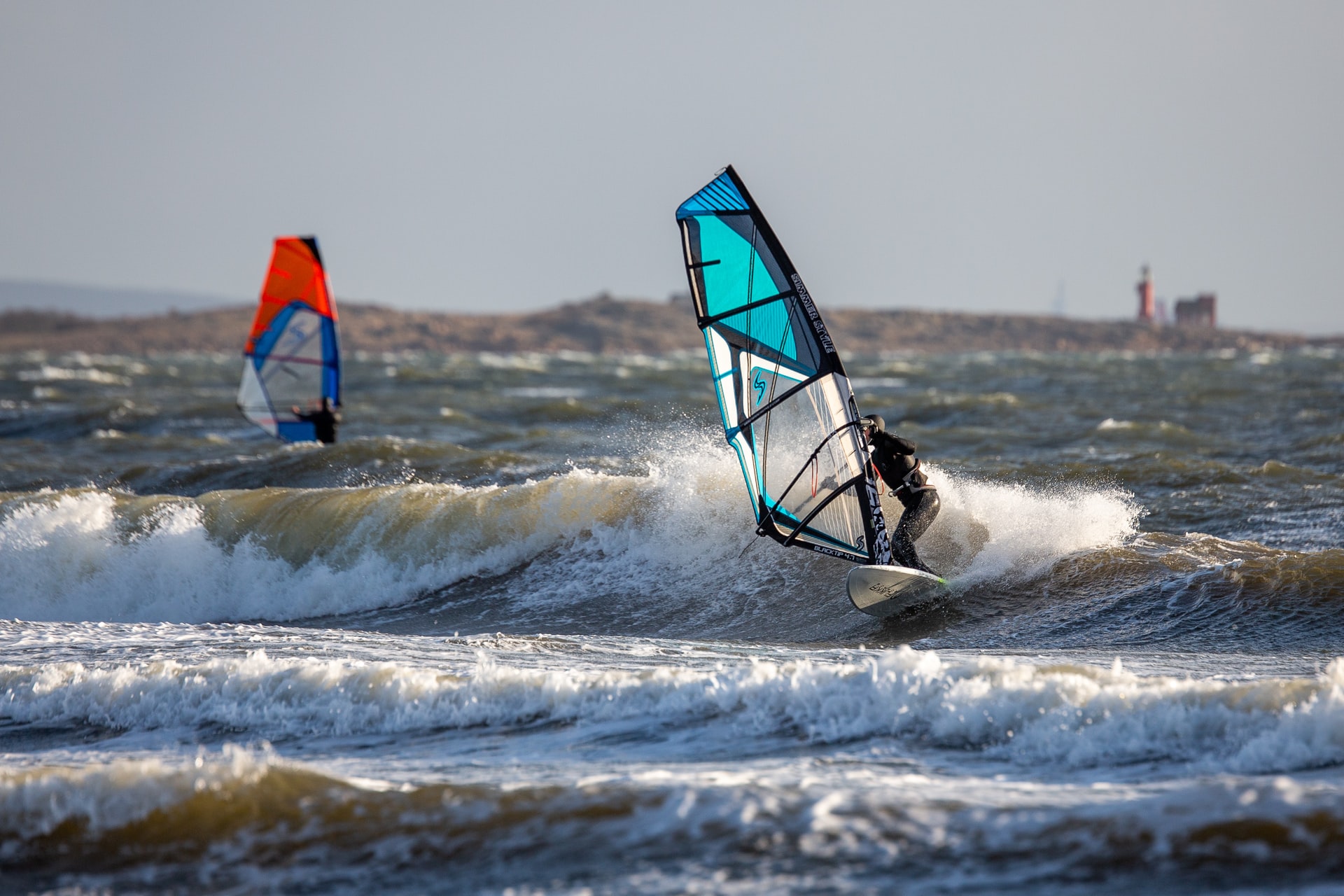
Surfing vs. Windsurfing: 8 Major Differences (& 4 Similarities)
-
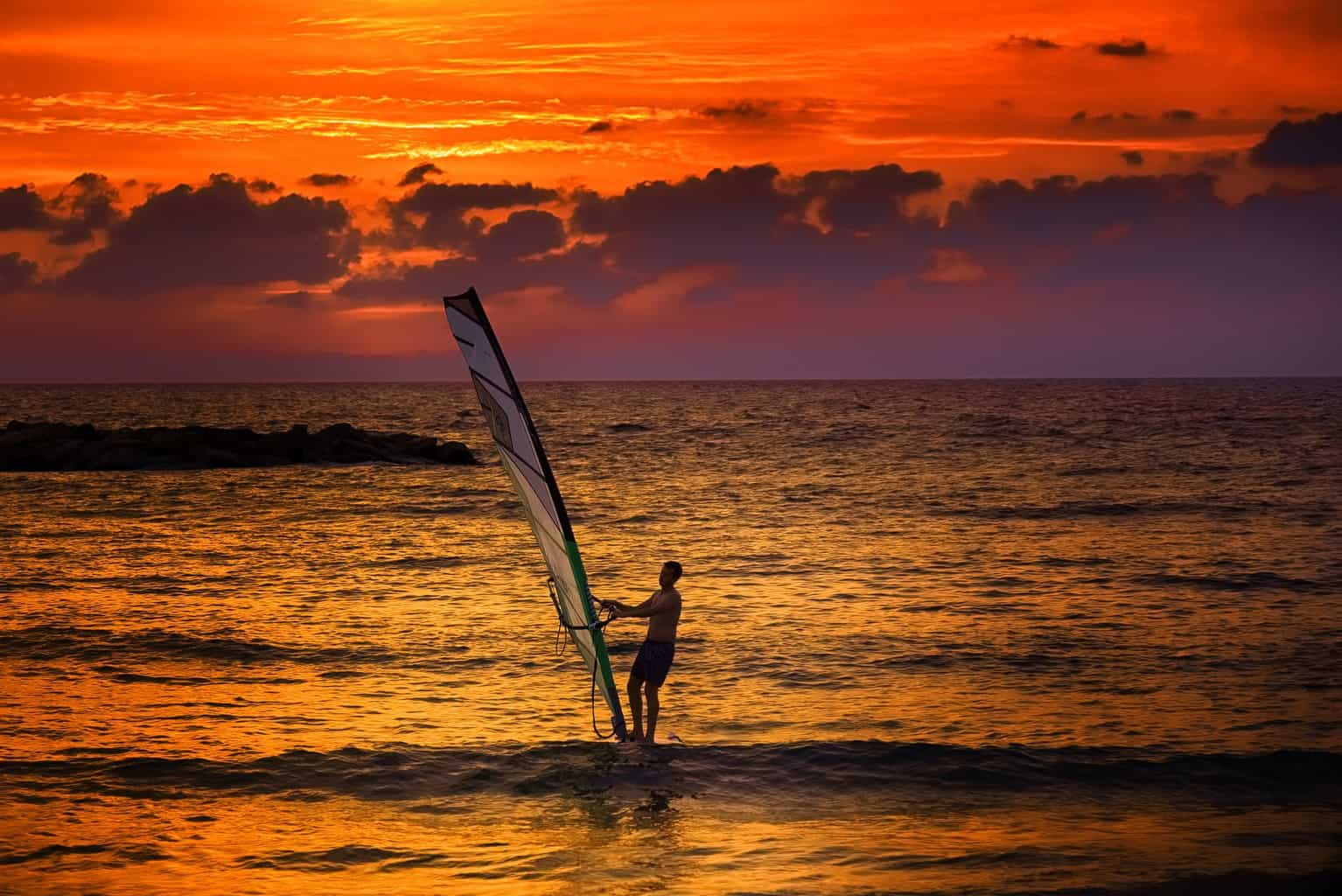
How Does Windsurfing Affect the Environment? (+8 Practical Tips)
-
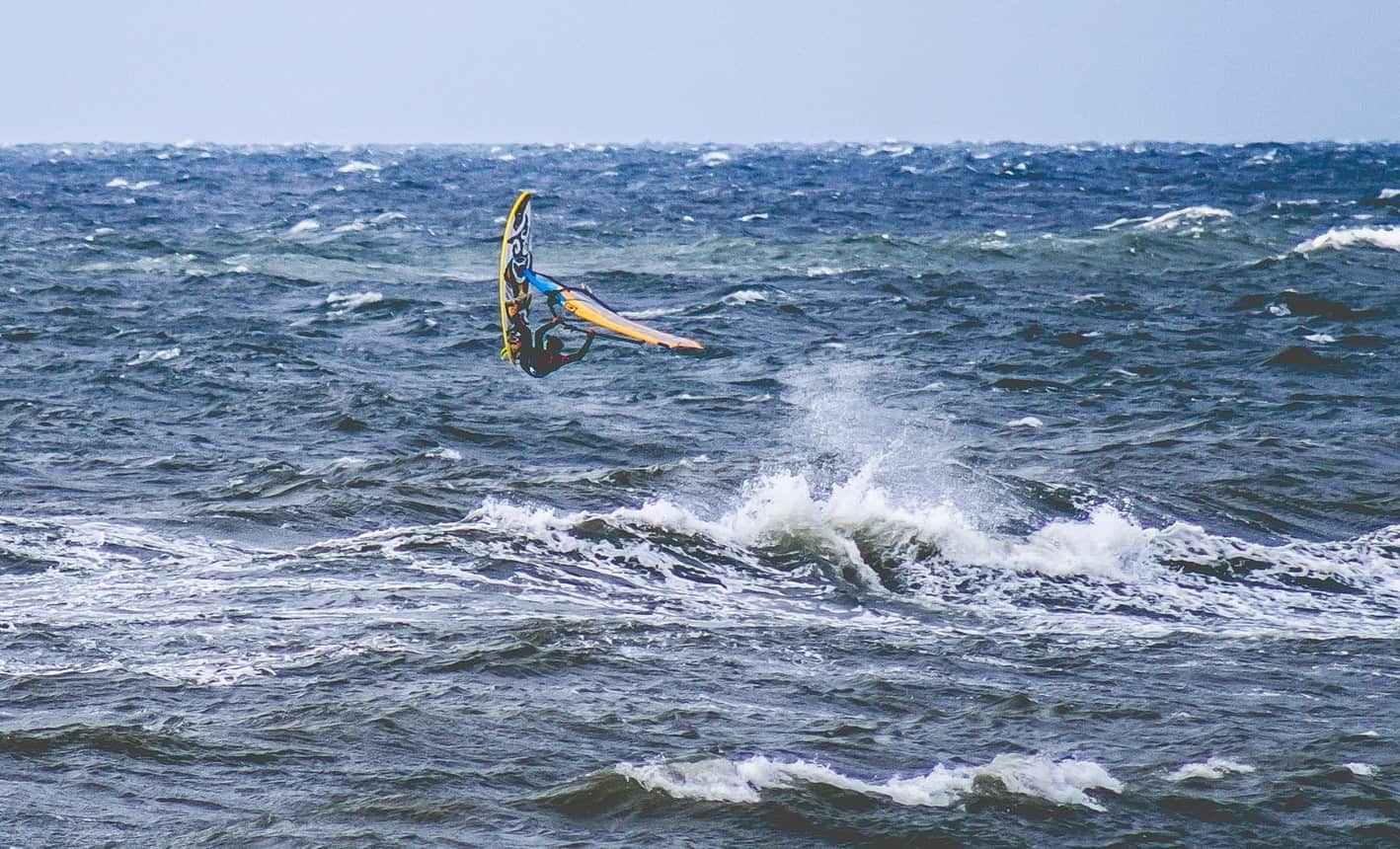
Is Windsurfing Dangerous? 14 Risks (& How to Avoid Them)
-
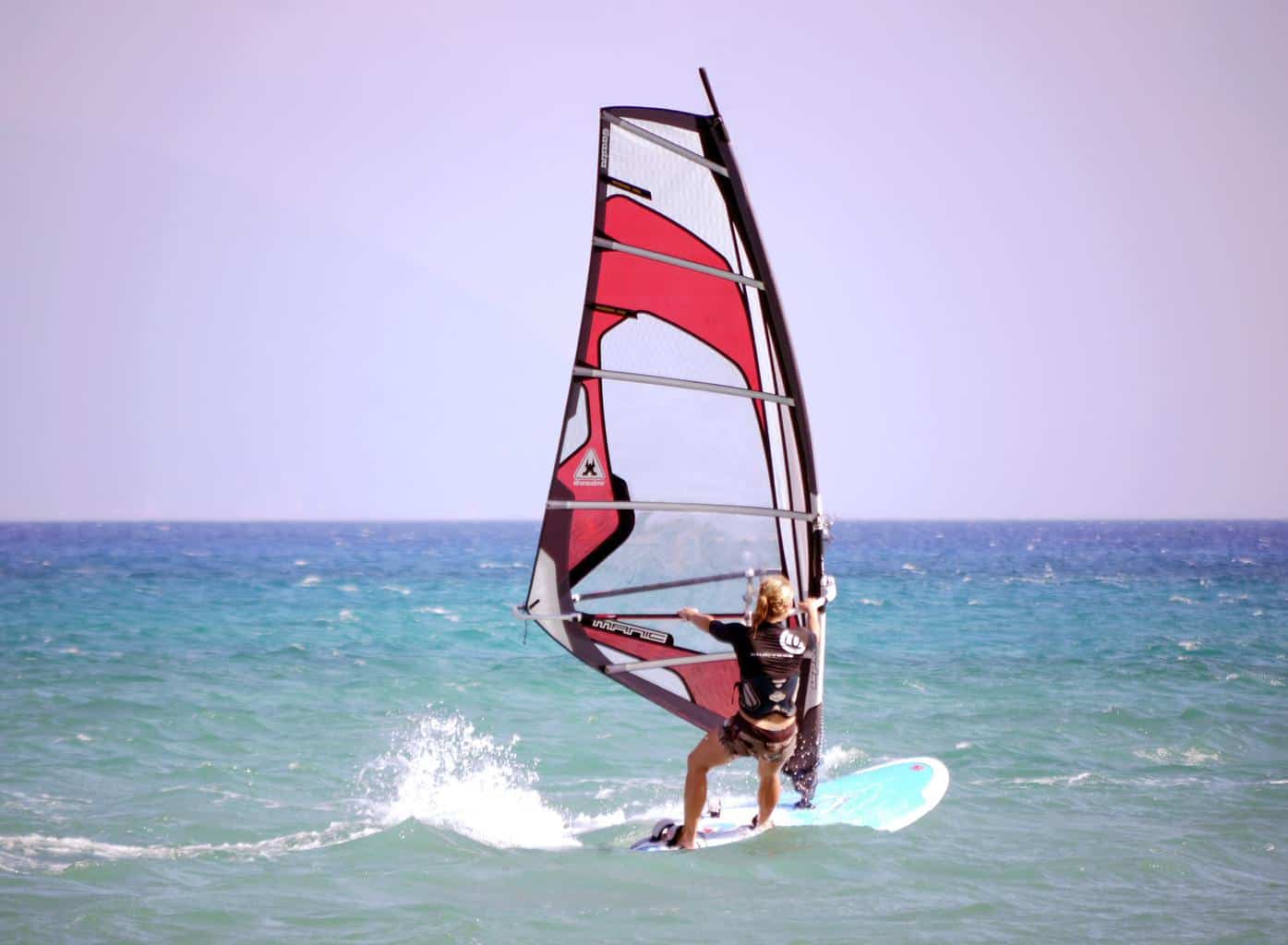
Windsurfing – 7 Common Beginner Questions (Answered)
-
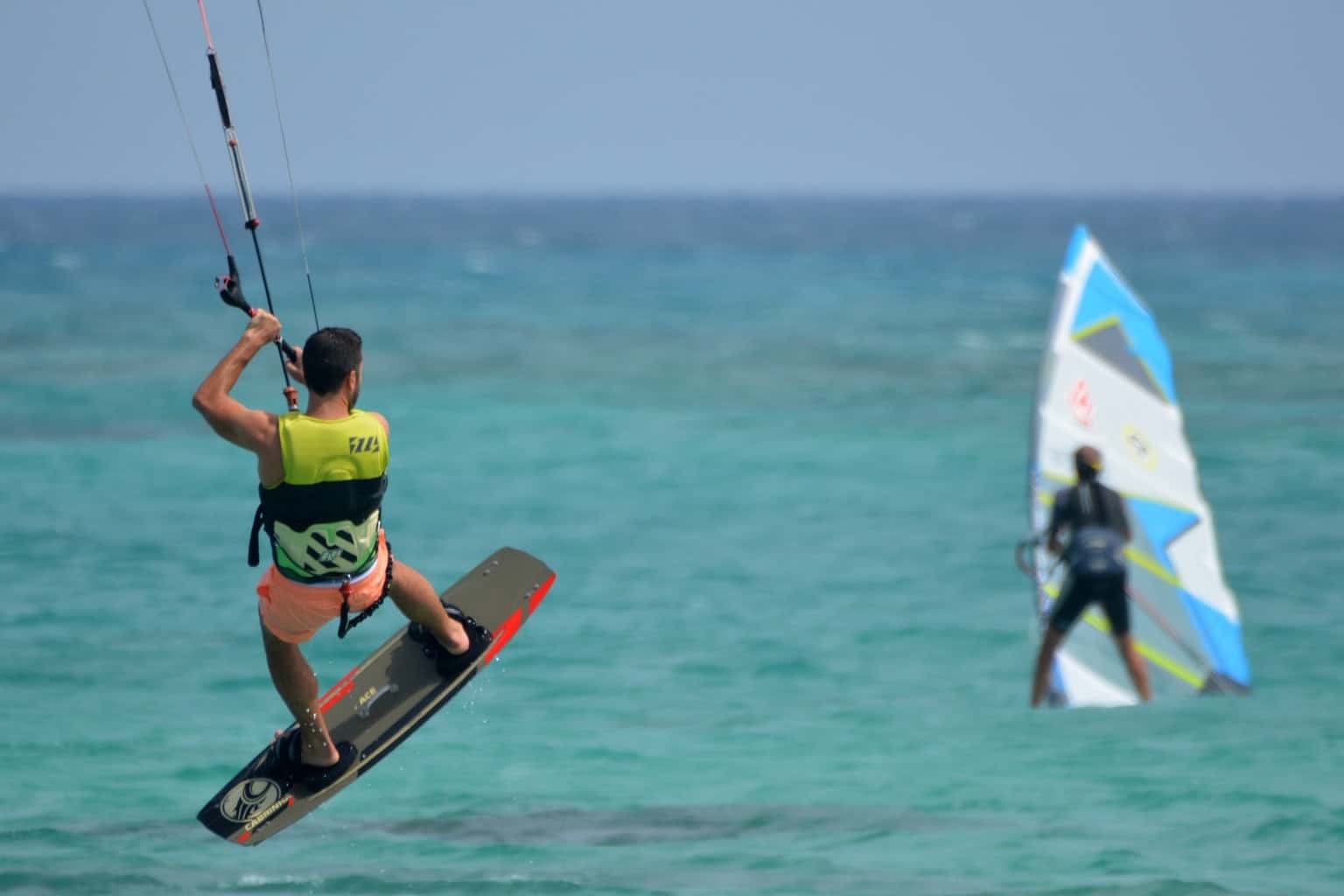
Is Windsurfing Faster Than Kitesurfing? (An Honest Look at the Facts)
-
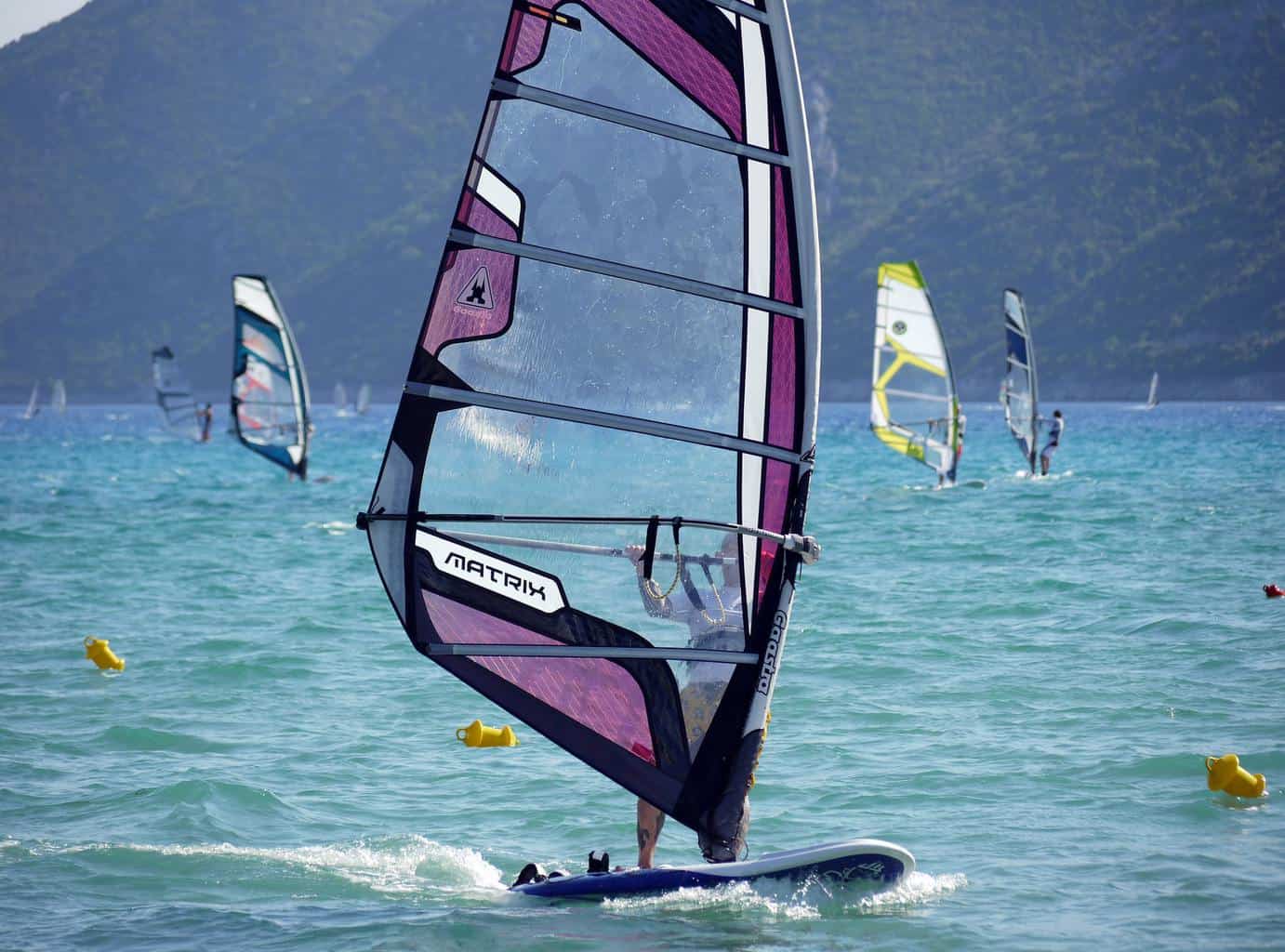
How to Choose the Right Windsurfing Sail Size (With Chart)
-
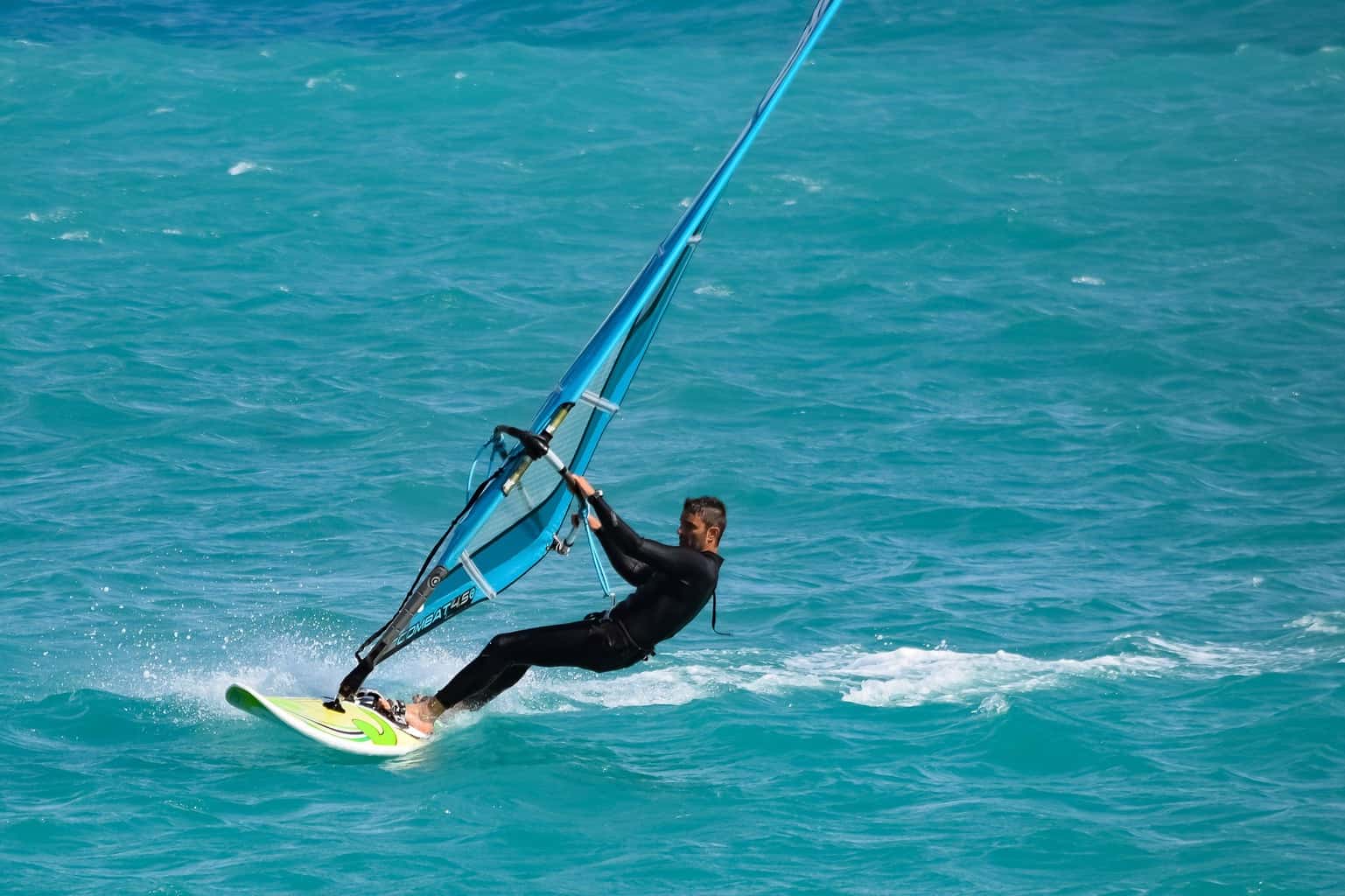
Windsurfing: How Much Downhaul Is Needed? (Essential Facts)
-
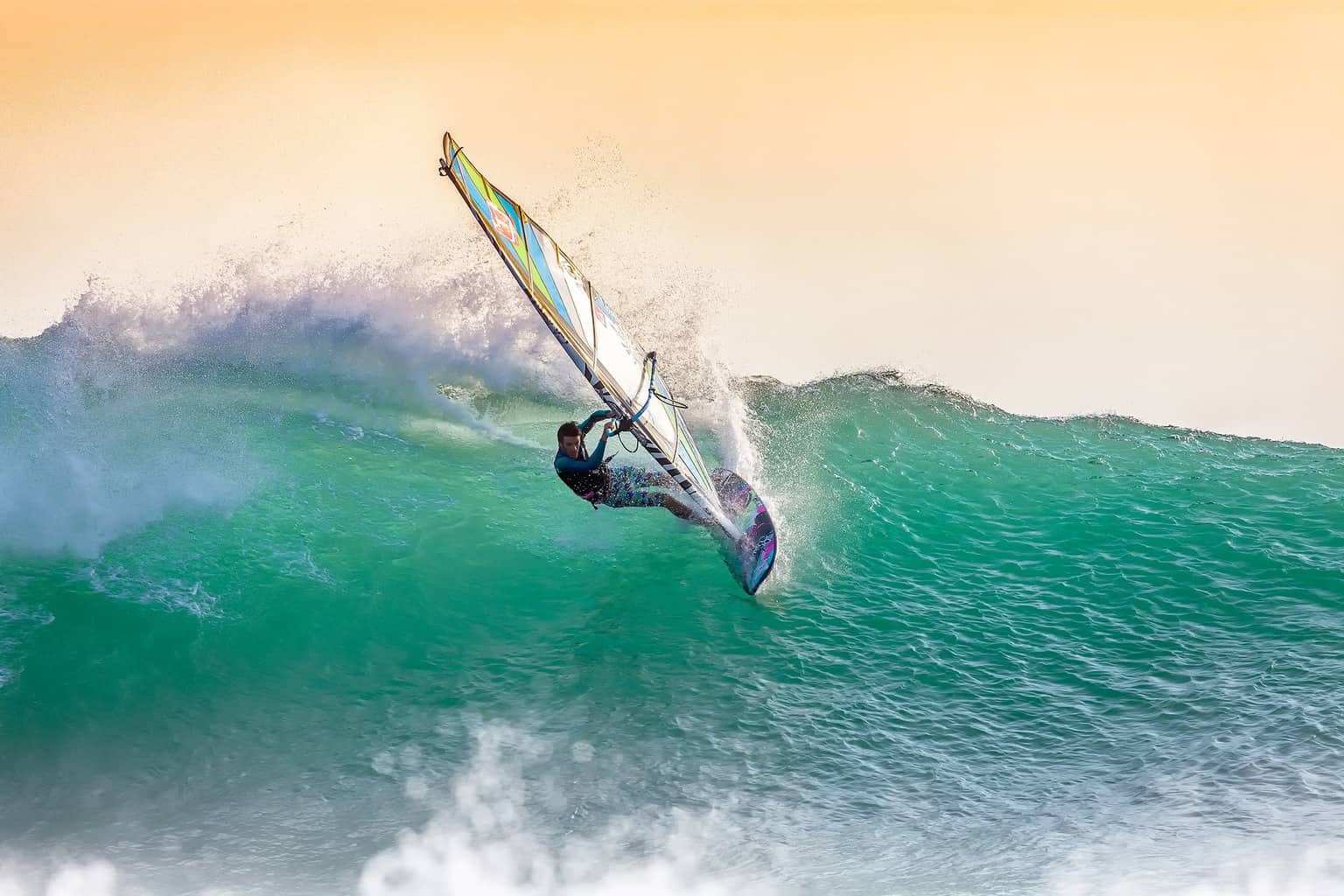
Is Windsurfing an Extreme Sport? (All You Need to Know)
-
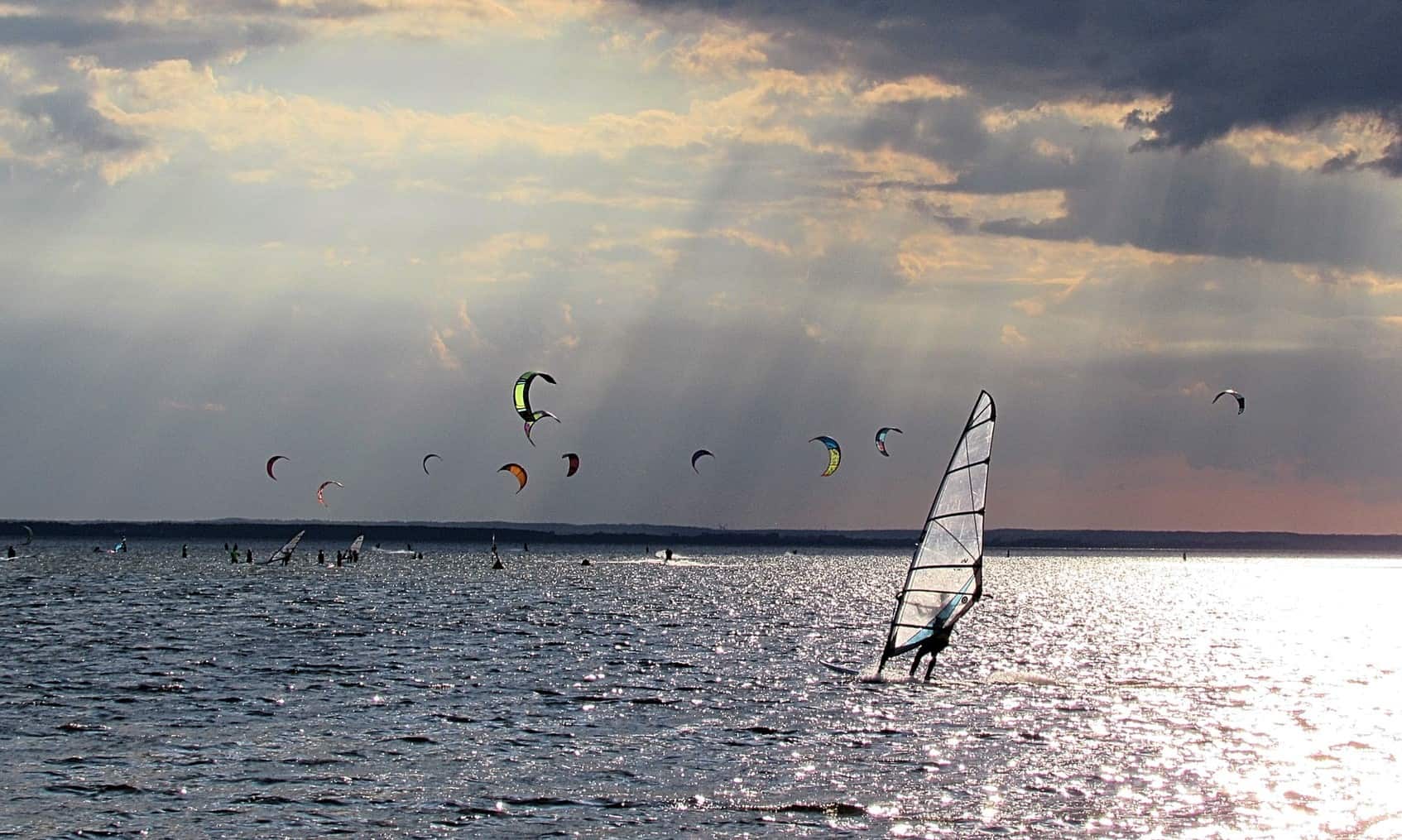
Is Windsurfing Easier Than Kitesurfing? (An Honest Comparison)
-
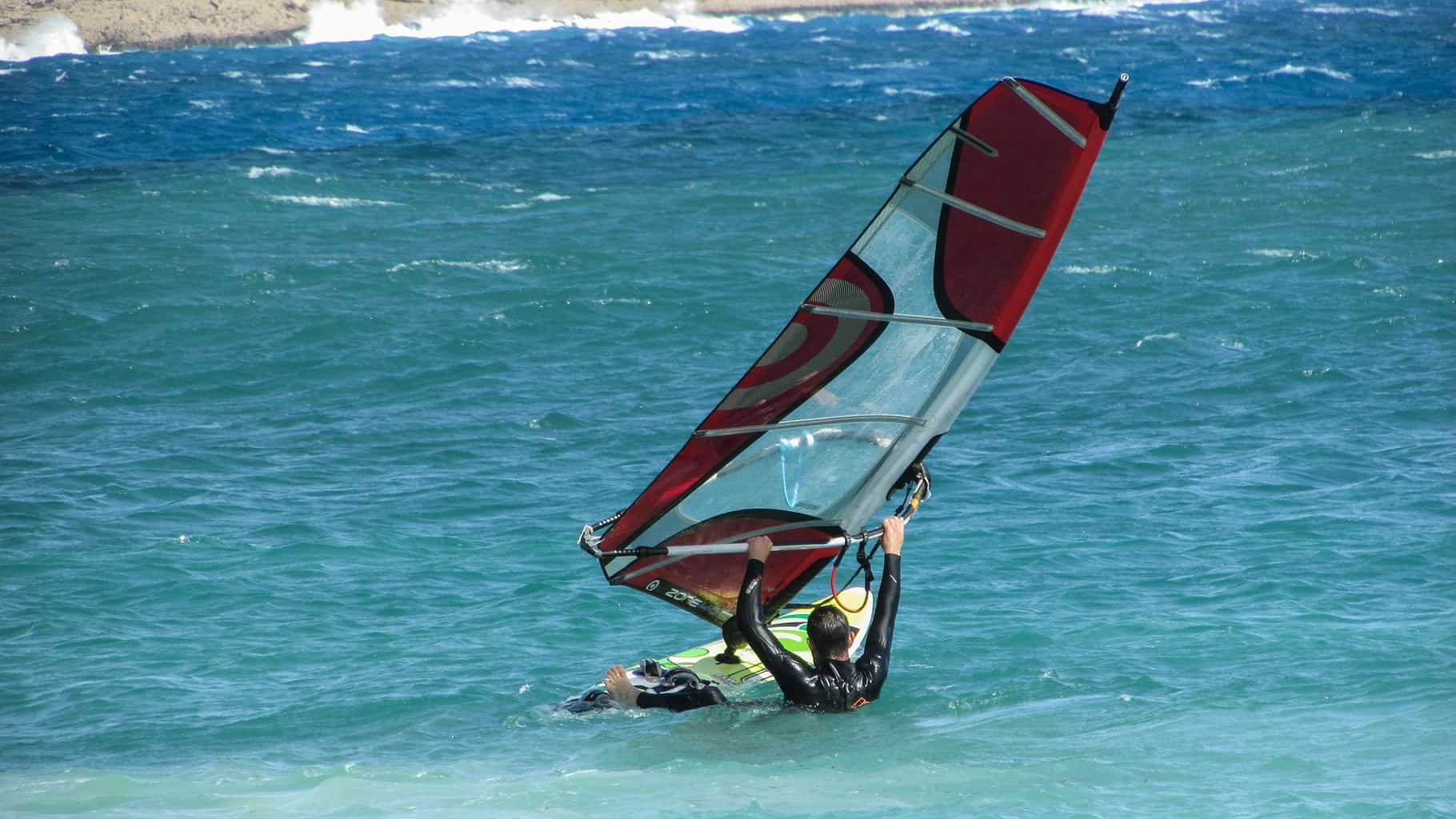
Is Windsurfing Harder Than Surfing? (Honest Comparison)
-
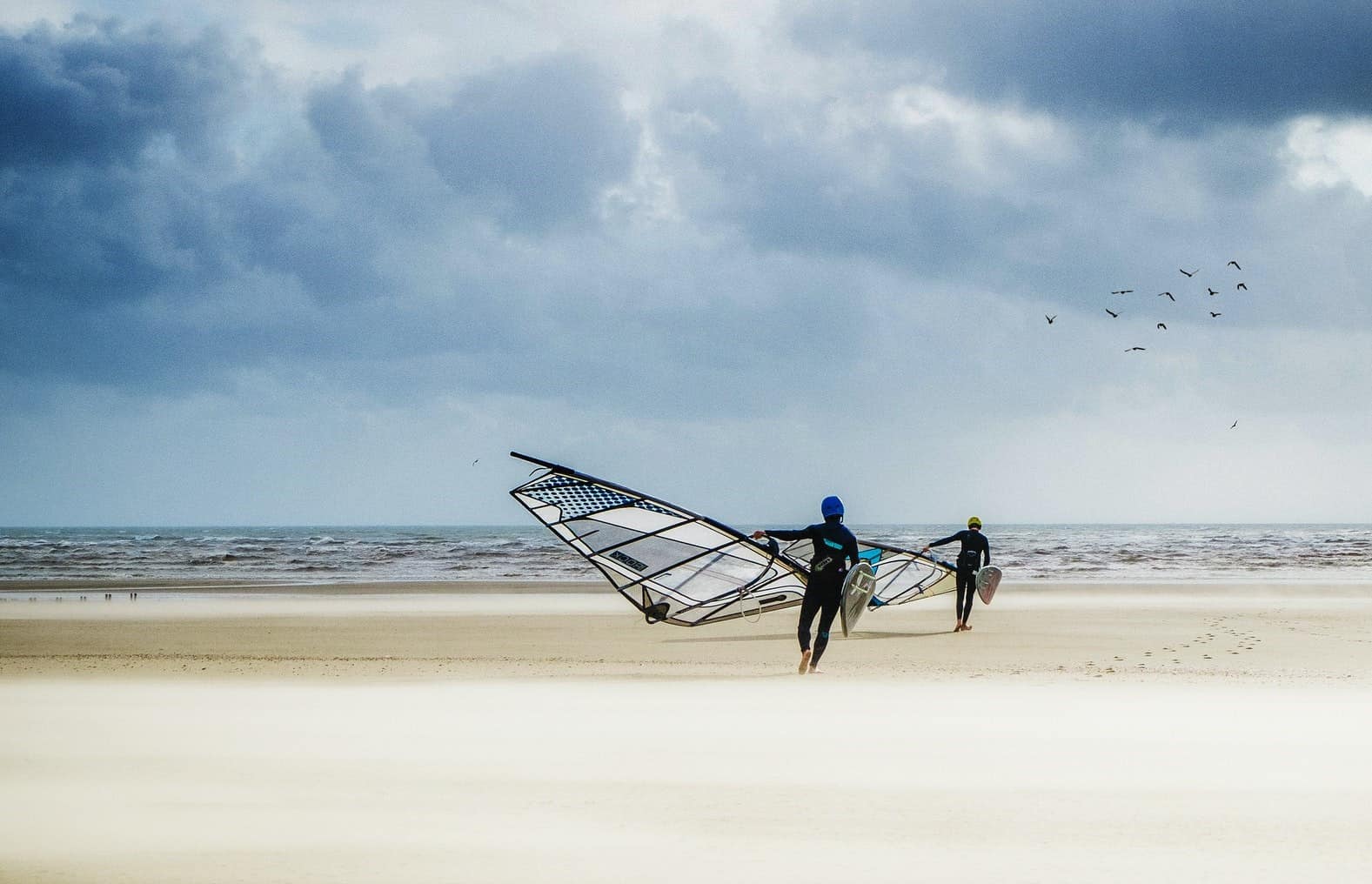
Is Windsurfing Still Popular? (An Insider’s Look at the Facts)











